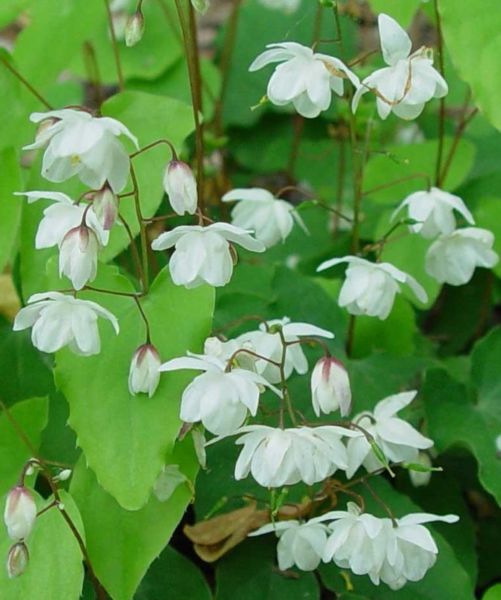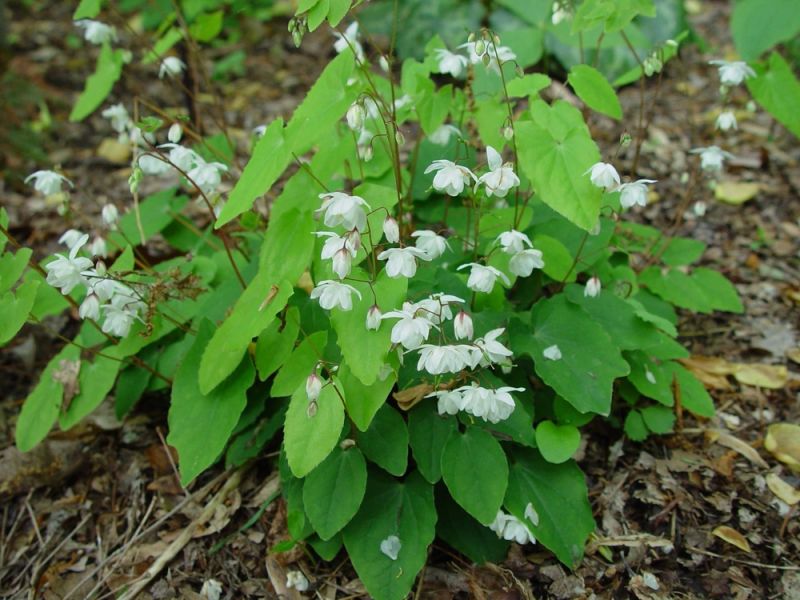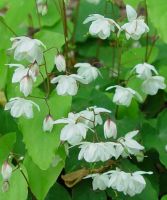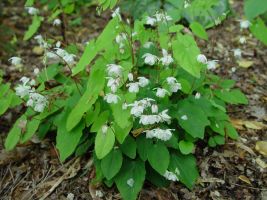Epimedium Alabaster™
Crisp white flowers on pure, grass green leaves.
I’m happy to bring you another superb epimedium selection, brought to us from the garden of Dr. Richard Lighty, former Director of Mt. Cuba Center for the study of Piedmont Flora. Plants Nouveau is introducing this plant in conjunction with The Conard-Pyle Co. Alabaster is a seedling of E. diphyllum , probably crossed with E. youngianum 'Niveum'. It originated in a groundcover planting of E. diphyllum in The Lighty’s garden outside of Kennett Square, PA. The violet purple in the flowers comes from the light purple, cauducous Sepals, otherwise, they are truly crisp, clear white. The mother plant of this selection has been growing in the garden for over 10 years.
I adore the complementary combination of the brightly colored grass green leaves and the large, crisp white blooms. This new selection really brightens up any shady spot in the garden. The fact that Alabaster fills a container so quickly compared to other selections means it will be much easier to sell for the high prices seen at garden centers. If it is a full, attractive pot, more consumers will be willing to spend a little more for this fantastic problem solving plant. One of my goals is to increase awareness with the media and consumers about the benefits of planting barrenworts. After the last two drought-ridden summers, I think it’s timely to promote plants for dry shade—especially plants that can grow in most parts of the US.
Who Am I?
- Common Name:Alabaster barrenwort
- Botanical Name:Epimedium 'Conalba' PP20344
- Type:Perennial
- Evergreen:YES
Cultural Details
TYPE
EVERGREEN
- Light:Part to full shade
- Soil:Average garden soil, but can tolerate poor soils.
- Moisture:moist to dry, but well drained
- Hardiness Zone4 – 8
- Bloom Time:Late mid to late April.
- Bloom Color:White
- Size:9-12” tall by 24-36” wide in 3 years
- Diseases & Pests:None known.



